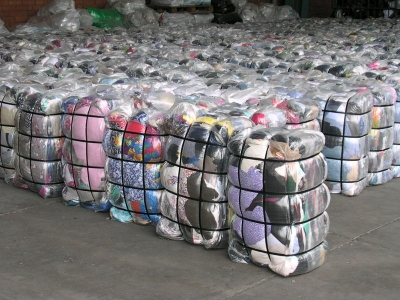Unraveling the threads of sustainability, one garment at a time!
Faced with growing environmental concerns and the urgent need for sustainable practices, Australia has become a leading player in the textile recycling revolution. The country’s commitment to reducing waste and promoting circular economy principles has paved the way for innovative approaches to address the significant environmental impact of the textile industry. With the development of advanced recycling technologies and increased consumer awareness, Australia is untangling the threads of sustainability, breathing new life into old garments and spearheading transformative change in the fashion industry.
The Problem of Textile Waste: Australia, like many other nations, has long been grappling with the growing problem of textile waste. Every year, millions of tons of clothing and textiles end up in landfills, where they contribute to pollution and take hundreds of years to decompose. Fast fashion trends, fast-paced consumerism, and a lack of awareness about textile recycling have only exacerbated this problem. However, the tides are turning as Australians become increasingly aware of the need to adopt sustainable practices.
Redefining Waste as A Resource: By recognizing that waste is not just waste but a valuable resource, Australia is revolutionizing textile recycling. Instead of throwing away garments, efforts are being made to collect, sort, and process textiles for reuse or conversion into new materials. The concept of a circular economy, where resources are continuously circulated and reused, is at the heart of these initiatives.
Innovative Recycling Technologies: Australia is investing in cutting-edge recycling technologies that can transform textile waste into new raw materials. Advanced mechanical and chemical processes allow for the recovery of fibers from old clothing, which can then be used to create new fabrics or blended with other materials for various applications. These technologies minimize waste, conserve resources and significantly reduce the carbon footprint of the fashion industry.
Closing The Loop: From Collection to Reuse: To facilitate the recycling process, Australia has established comprehensive collection systems for textile waste. Clothing donation bins, charities, and dedicated collection centers have become common, making it easy for people to dispose of their unwanted clothing responsibly. These collected textiles are then sorted based on their recycling or reuse potential, ensuring each item finds its ideal destination.
Promoting Consumer Awareness: Promoting consumer awareness is crucial to the success of textile recycling efforts. Australians are becoming more aware of the environmental impact of their clothing choices, leading to an increase in demand for sustainable fashion alternatives. Ethical brands, eco-friendly materials, and recycled garments are gaining popularity, driving the need for a robust textile recycling infrastructure.
Collaboration For A Sustainable Future: The success of textile recycling in Australia depends on collaboration between various stakeholders. Governments, fashion brands, recycling companies and consumers must work together to establish efficient recycling systems, raise awareness and promote sustainable practices throughout the fashion supply chain. By forging partnerships, sharing knowledge and embracing innovative solutions, Australia is forging a path to a more sustainable future.
Bottom Line: As the textile industry grapples with its environmental impact, Australia is at the forefront of the textile recycling revolution. Through advanced recycling technologies, comprehensive collection systems, and growing consumer awareness, the nation is untangling the threads of sustainability. By redefining waste as a resource and embracing circular economy principles, Australia paves the way for a fashion industry that respects the environment, reduces waste and breathes new life into old trends. Together, we can create a brighter, greener future, one garment at a time!

